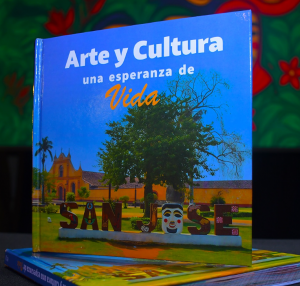In March 2024, we began the participatory cultural mapping led by the NIHR LatAm Centre in Guatemala, Bolivia, and Colombia. Today, we take a step further: sharing how this methodology is being transformed into regional catalogues—tools to integrate art and culture into the support of people living with non-communicable diseases (NCDs).
Cultural mapping: researching with the community
Health is not built only in hospitals and clinics. In many Latin American communities, art and culture are essential to daily well-being: an embroidered textile that strengthens identity, a melody that inspires resilience, or a dance that unites generations. Recognizing this value, the NIHR LatAm Centre has worked to explore how these cultural resources can support the management of NCDs and strengthen the connection between culture and health.
The starting point of the catalogues is collaborative, community-based work. Through workshops, community walks, and interviews, people identify and describe the cultural resources that are part of their everyday lives: music, dance, embroidery, weaving, festivals, ancestral practices, and much more.
A local researcher from Guatemala commented: “Many cultural producers and artists were surprised when we talked about the connection between culture and healthcare. It’s something most of them hadn’t considered before, but they felt it was a newly discovered potential, and now they are interested in learning more.”
This mapping not only records artistic expressions but also recognizes the meanings they hold in people’s lives, their role in social cohesion, and how they contribute to physical and emotional well-being.
Applying the cartographic methodology
The foundation remains participatory: communities and local leaders identify cultural resources (dance, music, textiles, traditional practices) with meanings li
nked to well-being. In meetings, observations, and shared narratives, this knowledge is translated into maps of living knowledge that reflect the richness of each territory.

From maps to catalogues
The catalogues are the tangible product of this research, acting as a bridge between community knowledge and clinical practice. In Bolivia, “Arte y Cultura: Una Esperanza de Vida” (translated as “Art and Culture: A Hope for Life”) has already been launched, while Colombia’s catalogue will be presented on 29–30 August 2025, and Guatemala’s on 17 September 2025.
These materials are not limited to documenting cultural expressions; they are designed to have a real impact on health. The aim is that health professionals, clinics, and community centres can recommend the cultural resources they contain as part of a more holistic and human treatment approach.
The NIHR LatAm Centre’s goal
The catalogues are not only cultural records—they are intended as practical tools that health teams can recommend to people living with NCDs. The goa
l is that, alongside medical treatment, patients have access to cultural resources that strengthen their physical, mental, and emotional well-being.
To ensure accessibility, the catalogues will be available in multiple formats—printed and digital—freely accessible to communities, health professionals, educational institutions, and cultural organizations. In this way, they not only complement clinical work but also become reference and learning materials for anyone interested in the connection between art, culture, and health. Thus, cultural mapping is transformed into a living, applicable, and dynamic resource that seeks to inspire new forms of care and support in Latin America. With the launch of the catalogues in Bolivia (July 2024), Colombia (29–30 August 2025), and Guatemala (17 September 2025), the NIHR LatAm Centre opens an innovative path towards the integration of culture and community health.

